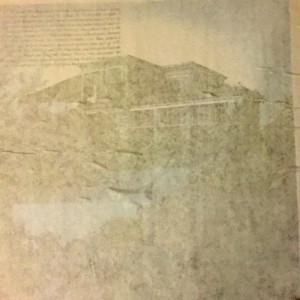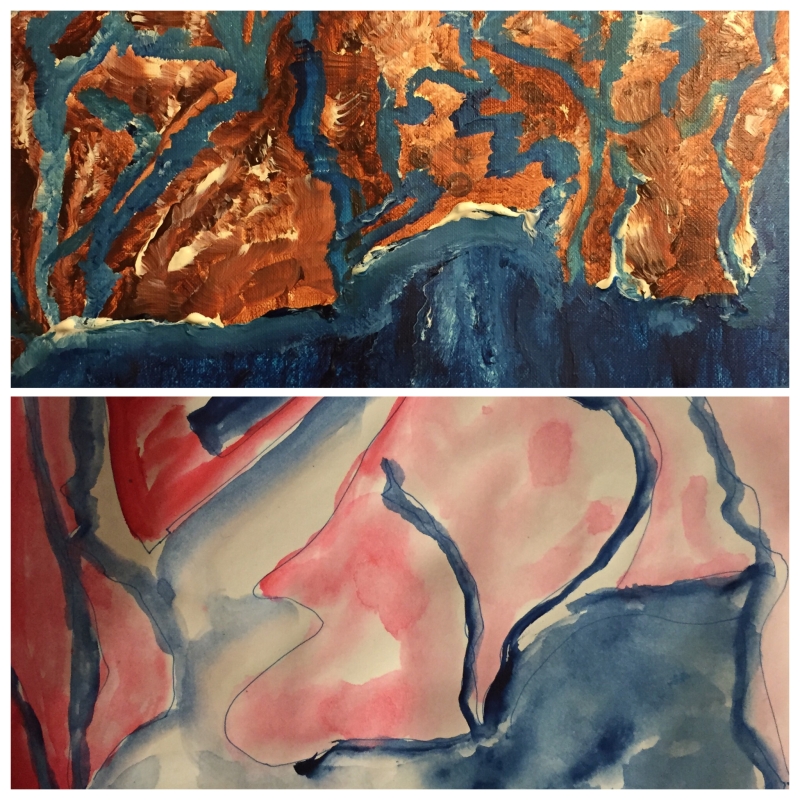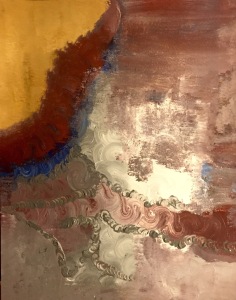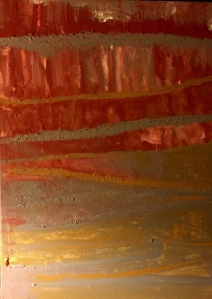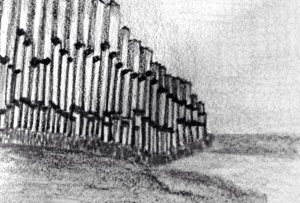A palimpsest is a parchment or the like from which writing has been partially or completely erased to make room for another text. In architecture discourse, the word is often used to describe layers of historical interventions on a site, whether in terms of use or design. Whenever spaces are rebuilt or redesigned, evidences of former uses remain.
While making a design intervention for a historical site, revealing the site’s palimpsest-ic quality is one of the basic agendas of my recent research-based design approach. Simply put, it means to design a historical site in such a manner that its various layers are revealed to the visitor in an experiential way. The visitor may not experience all the layers at once, maybe he/she experiences a glimpse of it at some place, another glimpse of another layer somewhere else, or many layers condensed into an in-comprehensive jumble somewhere else.
The nascent questions that emerge out are: what is the physical quality of a palimpsest, what are its contents, and what processes contribute to its making?
A Palimpsest, thus, could be:
- a stack of layers of historical evidences superimposed one on top of another, and all layers equally visible but indiscernible.
- a layer of historical evidence added, then erased, then another layer added, then erased and another added
- several layers condensed into one image and then careful obliteration reveals underlying layers.
Content wise, a palimpsest could be
- a layering of temporal events
- a layering of sensorial experiences
Palimpsests have usually been produced as a result of
- erasing by scraping off
- collating
- stacking
The idea emerged as i was building a design studio for Landscape Architecture, University of Illinois at Urbana-Champaign in Spring 2015. During the first part of the studio which was titled “Performing the Urban Palimpsest: Movement-based landscape inquiry and design of the Midway Plaisance,” students were given the task of making a digital illustration of the Midway Plaisance that represents it as a palimpsest. Using Photoshop and Illustrator, they created illustrations that stacked images of maps and historical photos of the site, manipulating the transparency of layers and composing images carefully to create a unified whole. They often asked for a precedent that i was unable to provide at that time.
And hence, i took on this challenge to create illustrations in acrylic on canvas by emulating the processes that make a palimpsest. The site chosen for this project is Hazratganj, Lucknow.
Hazratganj is a major urban precinct—recently identified as a Heritage Zone. It has several specialized markets selling chikan clothing, libraries, schools, theaters, local eateries and administrative offices; many iconic book-shops where writers conglomerate; cafes acting as political hubs for journalists, writers, and thinkers such as Dr. Ram Manohar Lohia, Atal Bihari Vajaypee, Bhagwati Charan Verma, and Anand Narayan Mulla; and a fashion destination. These form the basis for producing paintings to reveal Hazratganj as a palimpsest of sensorial experiences.
Hazratganj was a purely residential precinct in 1810, and emerged as Ganj market to sell imported items in 1827. AFter sustaining the 1857 Indian Mutiny, it was redesigned with British sensibility as an exclusively British marketplace. During World War I, it became a political hub, and remains so until today, with the opening of the Indian Coffee House. In 2010, it was revitalized by architect Nasir Munjee as a solely pedestrian street for an enhanced urban experience. These form the basis for producing paintings to reveal Hazratganj as a palimpsest of temporal events.
This artistic project of making palimpsest-ic paintings combines different kinds of materials from archival research such as texts, maps, newspaper cuttings, anecdotes, and photographs. The aim of this project is also to bring literal visibility to archival research, which otherwise gets hidden away in books or reports.
Some images that contribute to the content for layers:
Maps
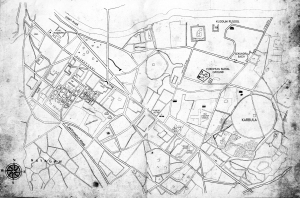
1862-63 Map

1857 Map
Text

Violette Graf snippet on Urdu poetry of Lucknow. text scanned from book and re-composed in Photoshop

Ram Advani’s account of Hazratganj, scanned and recomposed for various images.
Newspaper cuttings

Pioneer, October 1935
Layering process
Preparing layers of content

Layered and flipped image for transferring

Layered and flipped image for transferring

Layered and flipped image for transferring
If canvas is an analogy for a site, then painting base layers, transferring print on to wet paint, applying water, scraping off excess paper, re-applying a finish coat, and re-painting on top emulates the process of making of a palimpsest. The following images demonstrate that process.
Painting 1

Base paint

Printout of the layered image flipped over onto wet paint, now waiting to dry

Once dry paper is dabbed with water

Paper scraped off to reveal print

Layers revealed on canvas

Adding color with an intention

Painting 1
Painting 2
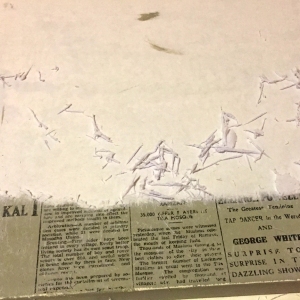
Paper scraped off to reveal print

Layers revealed on canvas

Painting 2
… to be continued with more paintings…


















